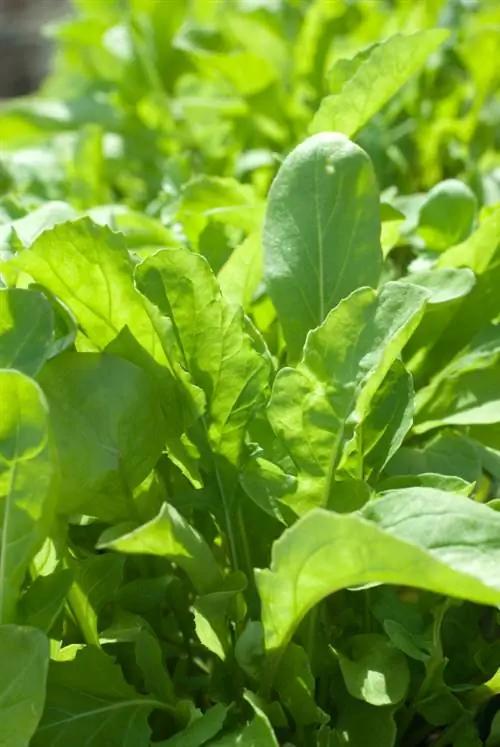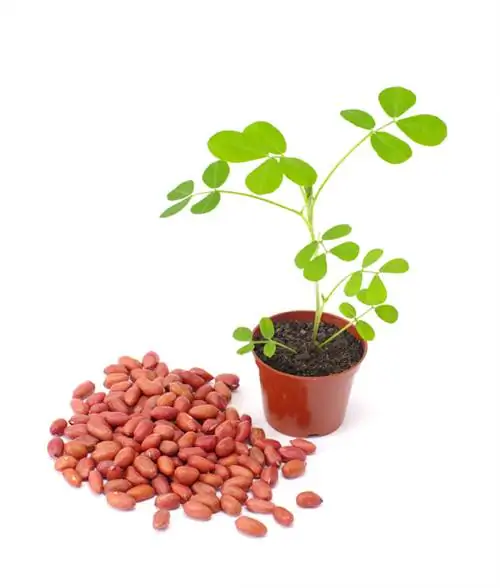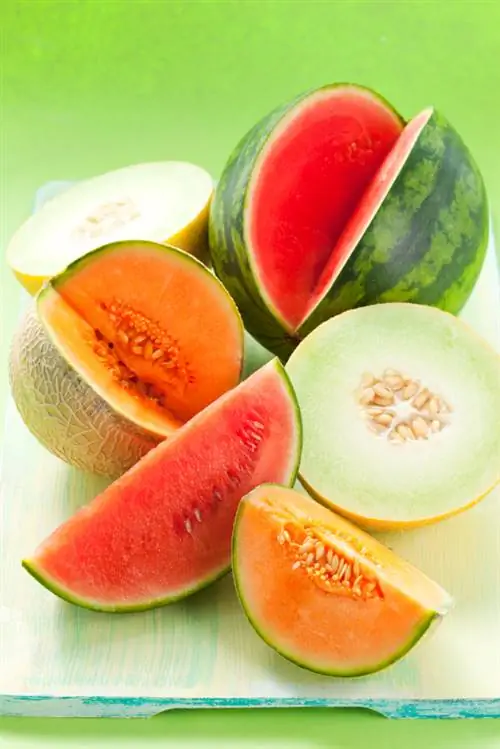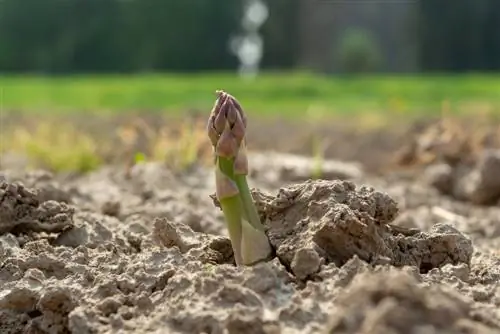- Author admin [email protected].
- Public 2023-12-16 16:46.
- Last modified 2025-06-01 06:02.
Rucola is an easy-care salad plant that is very popular with its slightly nutty taste. Arugula is often associated with Italian cuisine, where it is used not only as a salad but also as a pizza topping. The Mediterranean plant, formerly popularly known as mustard rocket or lettuce rocket, can be easily grown in the garden or in plant bowls on the balcony. With the help of a few useful tips and little effort, you can soon be enjoying a delicious salad.
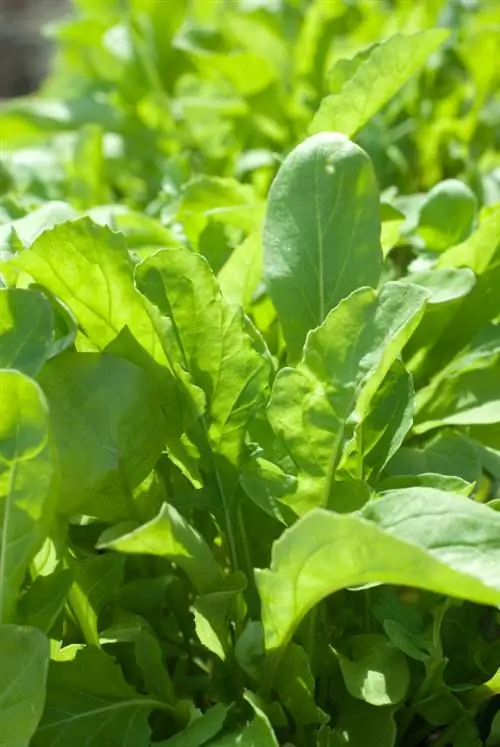
How can I grow arugula successfully?
Arugula is easy to grow yourself: start the pre-cultivation on the windowsill at the end of January, plant it outdoors or in a balcony box from March, choose a sunny location, avoid fertilizer and pay attention to crop rotation. Harvesting occurs approximately 4-6 weeks after planting.
Fresh from the garden to the table - grow arugula yourself
You can pre-cultivate the rocket plant on the windowsill from the end of January. The temperature should be between 10 and 16 °C, i.e. neither too cold nor too warm. After a germination period of approx. 5 - 15 days, the first small plants appear, which can be moved outdoors from March or the seeds can be sown directly there again. But remember to protect the arugula from frost damage in extreme cold. If necessary, cover the plants with a garden fleece.
The right location ensures lush growth
Choose a place that is as sunny as possible for the arugula perennial. It is ideal if you have already prepared the site with compost in the fall. The soil prepared in this way is an excellent basis on which the rocket develops splendidly and thanks you for your effort with rapid growth. The more nutrient-rich the soil, the greater the harvest. However, it is important to note that no other cruciferous plants have been grown in the same place in the last three years. The arugula also belongs to this plant genus and the crop rotation requires that there is a break in cultivation in order to obtain satisfactory results. If other cruciferous plants, for example types of cabbage such as white, red or Brussels sprouts, were previously planted in the same place, it is important to pay attention to the time interval.
The right care makes the difference
Arugula is a more than grateful plant in this regard. It is considered extremely easy to care for and delights gardeners with its rapid growth. After just 4 to 6 weeks you will be rewarded with freshly harvested lettuce. No additional fertilizers are required when growing arugula. Sometimes this can even be the opposite. If arugula is given too much fertilizer, this can trigger what is known as leaf spot disease. If your plants are affected, you must remove them completely and dispose of them. If you ensure well-dosed irrigation on dry days, this is completely sufficient and you can soon look forward to a high harvest yield.
Flea beetles, cabbage flies and other pests
Unfortunately, rocket is not immune to pest infestation. However, only a small amount of effort is required to intervene as a precautionary measure. Regularly loosen the soil around the plants with a rake and ensure that the soil is always slightly moist. This is how you protect your plants from annoying flea beetles. You can protect the plants against cabbage flies with a simple insect net (€42.00 on Amazon). To avoid the leaf spot disease mentioned above, you should avoid fertilizing altogether. There is a risk of further damage to the plants from so-called downy mildew, a fungus that unfortunately often appears in allotments. You can spray the plants with horsetail broth to strengthen them. In most cases, compliance with crop rotation is sufficient. Adequate plant spacing ensures that you can only water the soil around the plants and the leaves are spared. This also prevents downy mildew. Do you have ladybugs in your garden? Then you have twice the reason to be happy! Ladybugs not only look cute, but they also kill this unwanted pest.
Harvest time - the most beautiful time
The rocket is ready to harvest when the leaves are approx. 10 - 12 cm long. Do not cut it too deeply, otherwise the rocket will continue to sprout. The plant, which contains iron and is rich in calcium, can then be harvested up to three times, just like lettuce. If you let the rocket perennial bloom in the garden, you can later harvest the seeds from the white-yellowish flowers yourself. Store the seeds in a dry place so that they are available for re-sowing. If you forego a harvest, the seeds will spread themselves throughout your bed. It can happen that the arugula spreads almost like a “weed”. Since arugula can be planted all year round, you can repeat the sowing at a different location so that you always have fresh lettuce on your plate until the end of September - until then, arugula can be harvested without any problems.
The preparation
You should remove as much of the rocket stems as they contain bitter substances and this allows the delicious, slightly nutty and spicy aroma to develop better. Let your imagination run wild and compose tasty salad creations that are also very he althy. Try it once - top a pizza with arugula. Simply enjoy the taste experience at home, which is otherwise reserved for Italian restaurants.

